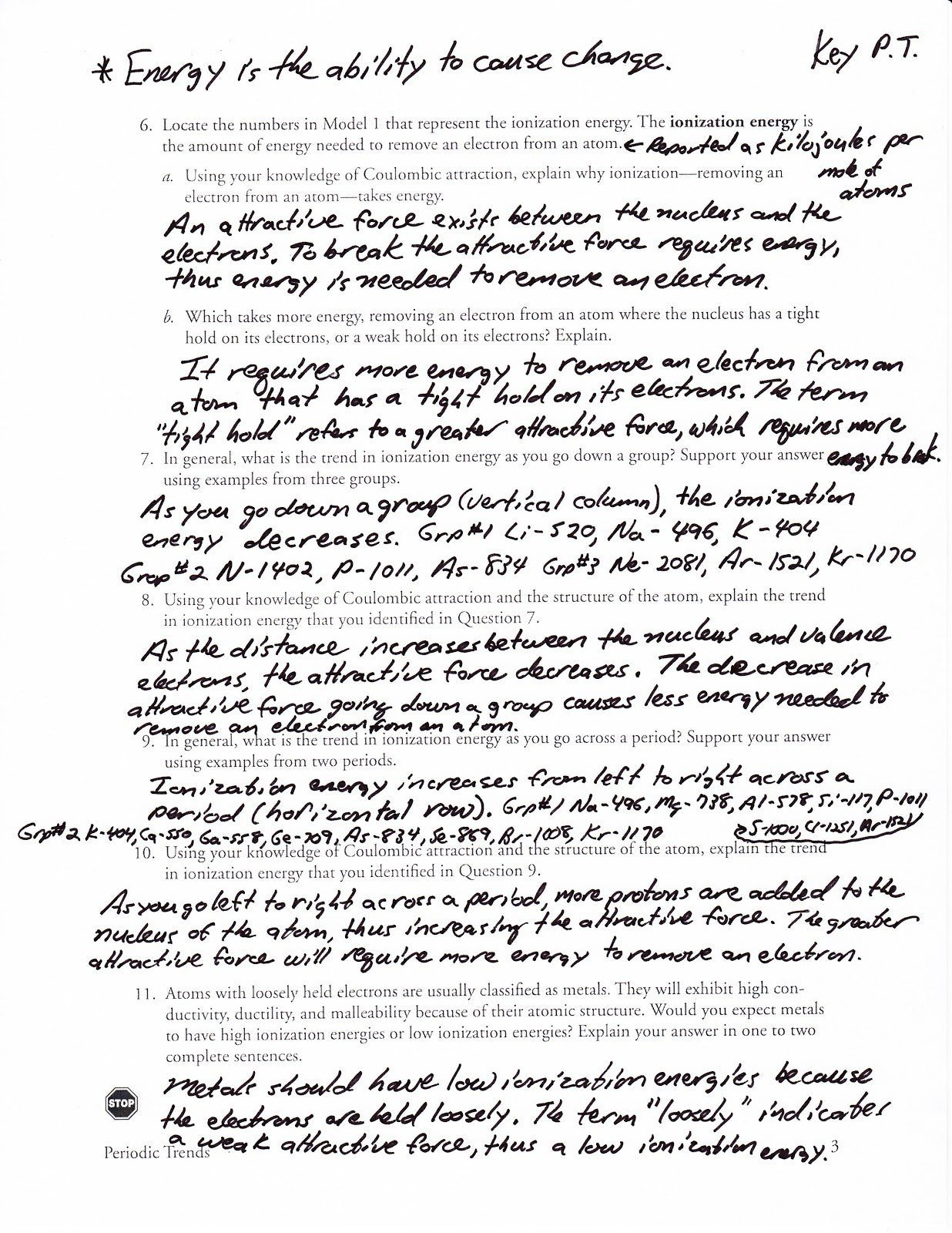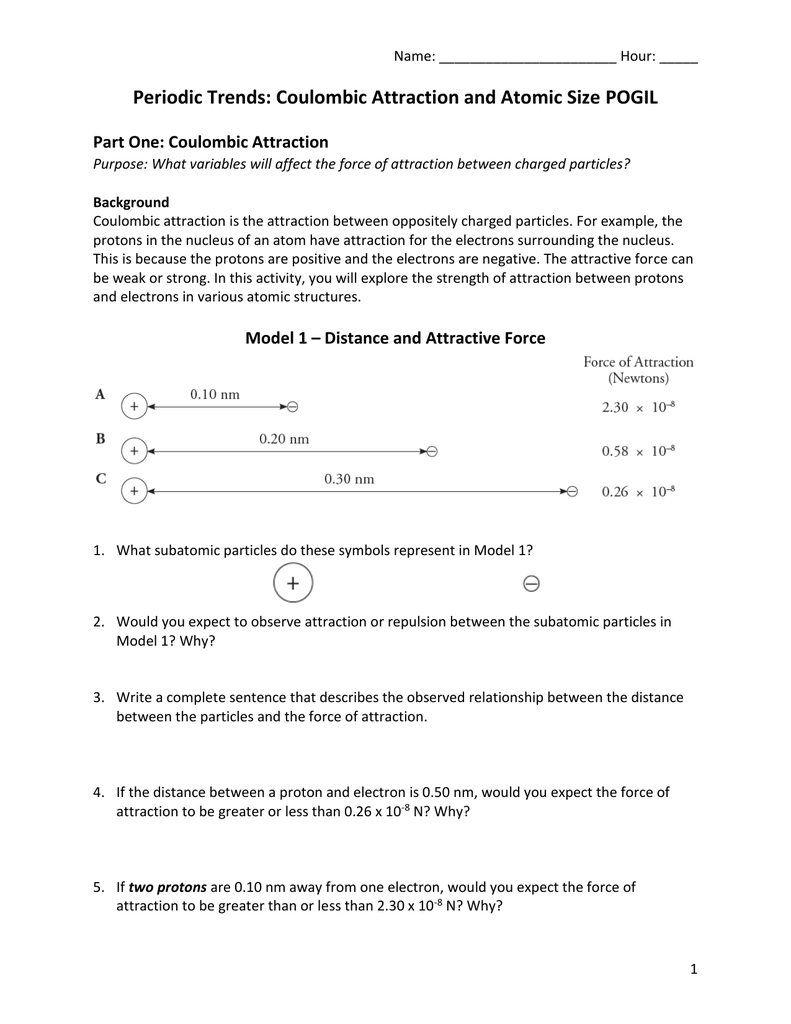Remember those frustrating chemistry classes where you felt lost in a sea of confusing symbols and seemingly endless memorization? I certainly do. But then, something clicked. It wasn’t a magical spell, but a systematic approach to understanding the periodic trends. This realization came through a series of POGIL (Process Oriented Guided Inquiry Learning) extensions, which took my understanding of the periodic table to a whole new level.

Image: excelguider.com
These extensions weren’t just about memorizing facts – they were about building conceptual understanding. They helped me grasp the reasons behind the trends and how they connect to the fundamental properties of atoms. Today, I’ll share my experience with those POGIL extension questions and how they can help you conquer the periodic table with confidence.
The Importance of Periodic Trends
Understanding the Periodic Table’s Language
The periodic table is more than just a collection of elements; it’s a powerful tool that reveals fascinating patterns and relationships. Periodic trends, such as electronegativity, ionization energy, and atomic radius, represent these relationships. By understanding these trends, we gain insights into the chemical behavior and reactivity of elements, enabling us to explain and predict how they interact with each other.
Predicting Chemical Reactions
Imagine being able to predict how two elements will react based solely on their positions on the periodic table. This isn’t magic; it’s the power of periodic trends. For example, knowing that elements with high electronegativity tend to attract electrons, we can anticipate the formation of ionic bonds when they react with elements possessing low electronegativity. This ability to predict chemical reactions is crucial for understanding and manipulating chemical processes.

Image: utedzz.blogspot.com
Delving Deeper: POGIL Extension Questions
POGIL extensions excel at providing hands-on learning experiences that go beyond simple memorization. These questions are designed to guide students through a process of discovery, encouraging them to analyze data, apply concepts, and draw conclusions based on their understanding of periodic trends. Let’s break down the key elements of these extensions that make them so effective.
Active Engagement and Collaboration
POGIL extensions are built around active learning. They encourage students to work together in groups, discussing ideas and challenging each other’s thinking. This collaborative approach reinforces learning and helps students develop critical thinking skills. They often involve analyzing data presented in charts or tables, prompting discussions about the relationships between properties and element placement.
Application of Concepts
Instead of focusing solely on definitions, POGIL extensions emphasize the application of periodic trends in real-world scenarios. They challenge students to connect their understanding of trends to specific examples of chemical reactions, predicting reactions, or explaining the properties of compounds. This hands-on approach makes the learning experience more engaging and relevant.
Building Confidence and Analytical Skills
POGIL extensions are designed to gradually increase the complexity of questions, fostering confidence and a deeper understanding of the periodic trends. They help students develop analytical skills essential for success in chemistry and other science disciplines. By working through these extensions, students learn to identify patterns, make predictions, and defend their reasoning, all of which are valuable skills in any scientific endeavor.
Mastering the POGIL Extension Questions
If you’re facing a POGIL extension on periodic trends, here are some tips to help you navigate through it successfully:
1. Start with the Basics
Ensure you have a solid foundation in the definitions and explanations of each periodic trend. Understanding the underlying principles will make it easier to grasp the more complex applications.
2. Collaborate and Discuss
Working with a group offers various perspectives and can help clarify any ambiguities or misconceptions. Engage in open discussions, asking questions and listening to your peers, to gain a deeper understanding of the concepts.
3. Think Critically and Apply the Trends
Don’t just memorize the trends; strive to understand their implications. Use your knowledge to solve problems and answer questions that involve real-world scenarios. The more you apply your understanding, the stronger it will become.
FAQ
Q: Are POGIL extensions only for chemistry?
No, POGIL is a learning methodology that can be applied to various subjects, including biology, physics, and even social sciences. They are particularly effective in science disciplines where conceptual understanding and problem-solving are crucial.
Q: What if I get stuck on a POGIL question?
Don’t be discouraged! The beauty of POGIL is that it encourages collaboration. Discuss your difficulties with your group members or seek help from your instructor. Working through challenges together is often the best way to learn.
Q: Are POGIL extensions available online?
Yes, you can find numerous POGIL activities and resources online, including textbooks, websites, and even specific POGIL extensions related to periodic trends. These resources can provide valuable supplementary material to bolster your learning.
Periodic Trends Pogil Extension Questions Answers
Conclusion
Mastering periodic trends is no longer a daunting task. With POGIL extensions, you have a powerful tool that empowers you to engage actively, collaborate effectively, and develop a deeper understanding of these essential concepts. Don’t be afraid to explore these questions and embrace the challenge of uncovering the secrets hidden within the periodic table.
Are you interested in learning more about POGIL extensions or exploring specific examples related to periodic trends? Let me know in the comments below!





